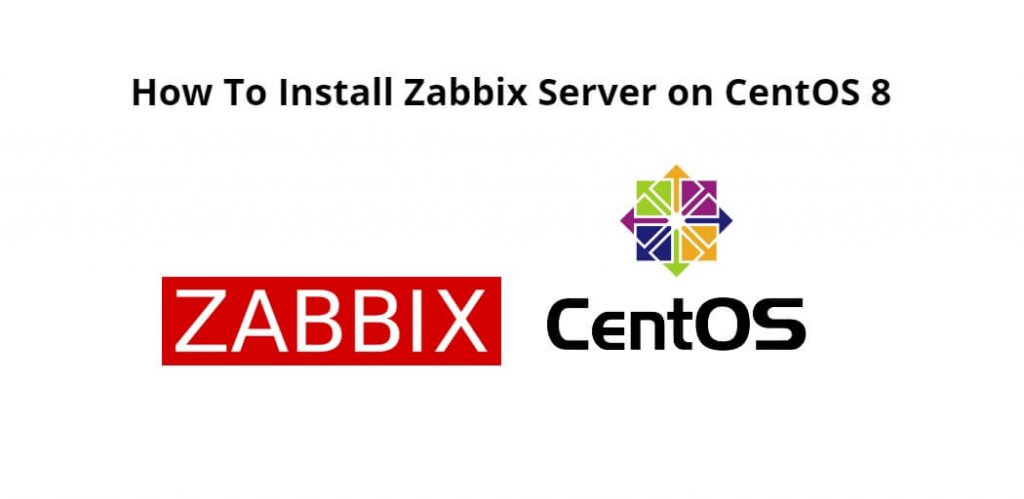Install zabbix server on centOS 8; Through this tutorial, we will learn how to install and configure zabbix server on CentOS 8.
How To Install Zabbix Server on CentOS 8
Just follow the following steps to install and configure zabbix server on centOS 8:
- Step 1 – Disable SELinux
- Step 2 – Install LAMP Server
- Step 3 – Configure MariaDB Database
- Step 4 – Install Zabbix Server
- Step 5 – Configure Zabbix
- Step 6 – Configure Firewall for Zabbix
- Step 7 – Access Zabbix Web Interface
Step 1 – Disable SELinux
First of all, open terminal and execute the following command on terminal to disable SELinux by editing /etc/selinux/config:
nano /etc/selinux/config
Update the following line:
SELINUX=disabled
Save and close the file.
Step 2 – Install LAMP Server
Now, execute the following command on terminal install the Apache webserver, MariaDB database server, PHP and other required PHP extension to system:
dnf install -y httpd mariadb-server php php-cli php-common php-mbstring php-mysqlnd php-xml php-bcmath php-devel php-pear php-gd
Once the above commands are executed, then open php.ini file by execute the following command:
nano /etc/php.ini
Update the following values as per requirements:
memory_limit 256M upload_max_filesize 16M post_max_size 16M max_execution_time 300 max_input_time 300 max_input_vars 10000 date.timezone = Asia/Kolkata
Save and close file.
Step 3 – Configure MariaDB Database
Execute the following command on terminal to secure the MariaDB:
mysql_secure_installation
This script will set the MariaDB root password, remove anonymous users, disallow root login remotely and remove test database as shown below:
Enter current password for root (enter for none): Press Enter Set root password? [Y/n] Y New password: Re-enter new password: Remove anonymous users? [Y/n] Y Disallow root login remotely? [Y/n] Y Remove test database and access to it? [Y/n] Y Reload privilege tables now? [Y/n] Y
Once the MariaDB is secured, log in to MariaDB shell with the following command:
mysql -u root -p
After that, create a database and user for Zabbix with the following command:
MariaDB [(none)]> CREATE DATABASE zabbix CHARACTER SET utf8 collate utf8_bin; MariaDB [(none)]> GRANT ALL PRIVILEGES ON zabbix.* TO zabbix@localhost IDENTIFIED BY 'zabbixpassword'
Then, flush the privileges and exit from the MariaDB shell with the following command:
MariaDB [(none)]> FLUSH PRIVILEGES; MariaDB [(none)]> EXIT;
Step 4 – Install Zabbix Server
Before install zabbix server, we neeed to install the libssh2 library required by Zabbix using the following command:
dnf install -y http://mirror.centos.org/centos/8.0.1905/AppStream/x86_64/os/Packages/libssh2-1.8.0-8.module_el8.0.0+189+f9babebb.1.x86_64.rpm
Then execute the following command on terminal to instal zabbix server on centOS 8:
dnf install -y https://repo.zabbix.com/zabbix/4.4/rhel/8/x86_64/zabbix-release-4.4-1.el8.noarch.rpm dnf install -y zabbix-server-mysql zabbix-web-mysql zabbix-agent zabbix-apache-conf
Now, start and enable the Zabbix server by executing the following command on terminal:
systemctl start zabbix-server systemctl start zabbix-agent systemctl start php-fpm systemctl enable zabbix-server systemctl enable zabbix-agent systemctl enable php-fpm
Step 5 – Configure Zabbix
Configure zabbix server by import the database schema to the Zabbix database using the following command on terminal:
cd /usr/share/doc/zabbix-server-mysql zcat create.sql.gz | mysql -u zabbix -p zabbix
Then, edit the zabbix_server.conf file and define Zabbix database credentials by executing the following command on terminal:
nano /etc/zabbix/zabbix_server.conf
Change the following lines:
DBHost=localhost DBName=zabbix DBUser=zabbix DBPassword=zabbixpassword
Save and close the file.
Now, configure PHP for Zabbix frontend by editing the following file:
nano /etc/php-fpm.d/zabbix.conf
Update the timezone value with your desired value as shown below:
php_value[date.timezone] = Asia/Kolkata
Save and close the file. And execute the following command on terminal to restart all the services to apply the changes:
systemctl restart zabbix-server systemctl restart zabbix-agent systemctl restart php-fpm systemctl restart httpd systemctl restart mariadb
Step 6 – Configure Firewall for Zabbix
Now, execute the following command on terminal to configure ports 10050 and 10051:
firewall-cmd --permanent --add-service=http firewall-cmd --permanent --add-port=10050/tcp firewall-cmd --permanent --add-port=10051/tcp
Then execute the following command on terminal to reload firewall services:
firewall-cmd --reload
Step 7 – Access Zabbix Web Interface
Finally, open web browser and type the URL http://your-server-ip/zabbix for access web interface of zabbix.
Conclusion
That’s all! we have successfully installed the Zabbix server on CentOS 8 server.
